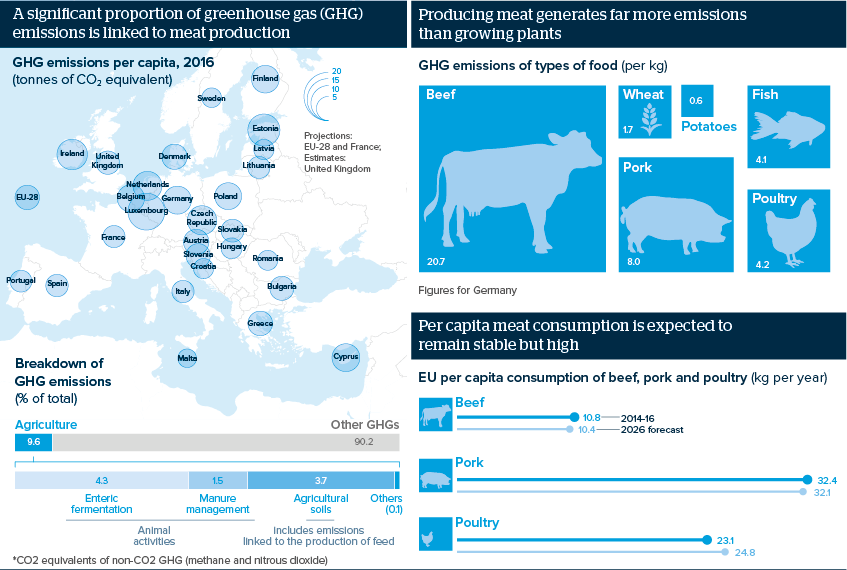Eating less meat may be key to reducing EU emissions
Unless meat consumption or production patterns change, the EU may miss its targets to cut greenhouse gas emissions
Source: Eurostat, OECD, WWF
Outlook
The EU aims to cut greenhouse gas (GHG) emissions by 80-95% compared to 1990 levels by 2050. This implies that livestock production, which accounted for at least 6% of direct GHG emissions in 2015, needs to be reduced. One option would be outsourcing the production of meat and animal feed to countries outside the union: the WWF estimates that net ‘virtual land imports’ by the EU stood at over 25 million hectares in 2010.
Another would be encouraging lower meat consumption. Concerns about health, the environment and animal welfare have contributed to a growing debate about vegetarianism and veganism; this could help shift consumption patterns in the long term.
Impacts
- Livestock production contributes indirectly to GHG emissions through land-use change, ie, when natural grassland is used for agriculture.
- Lower meat consumption could lead to better public health outcomes and reduce the prevalence of cardio-vascular diseases and colon cancer.
- Virtual land imports help the EU improve its climate balance but have the opposite effect for exporters such as Argentina and Brazil.
- Changing perceptions could prompt regulatory changes to improve animal welfare, as seen when the EU banned eggs from hens in battery cages.
